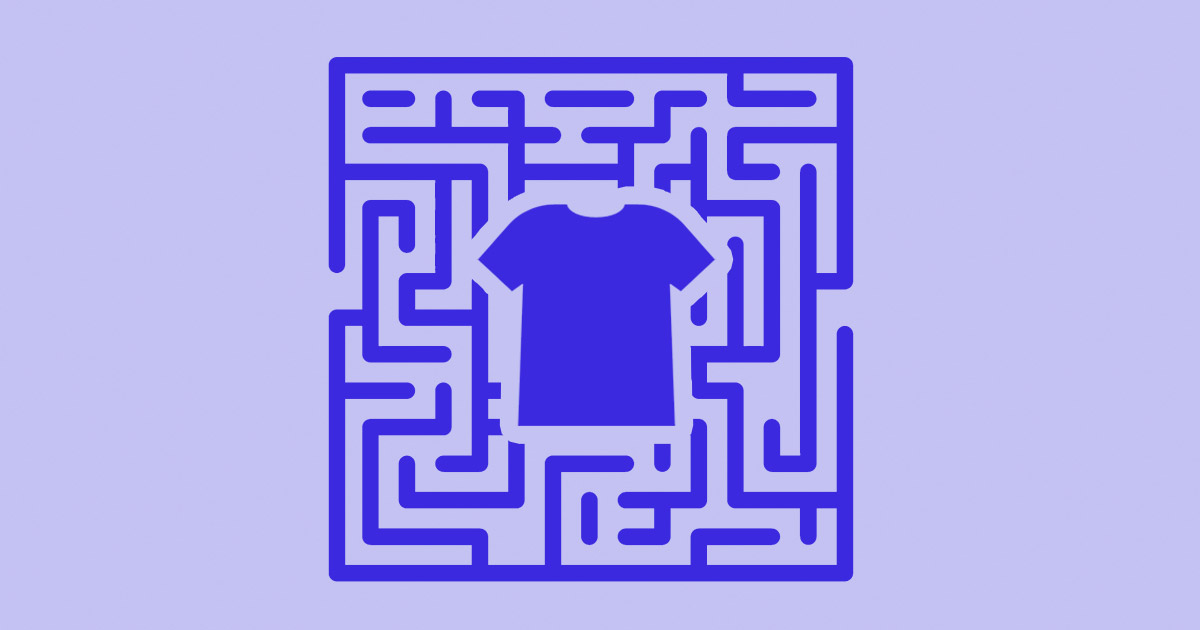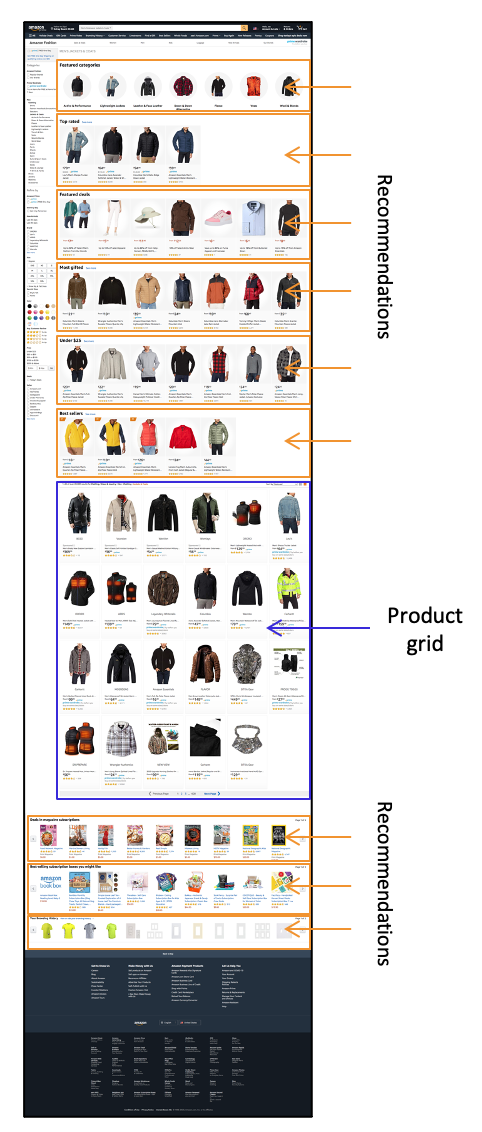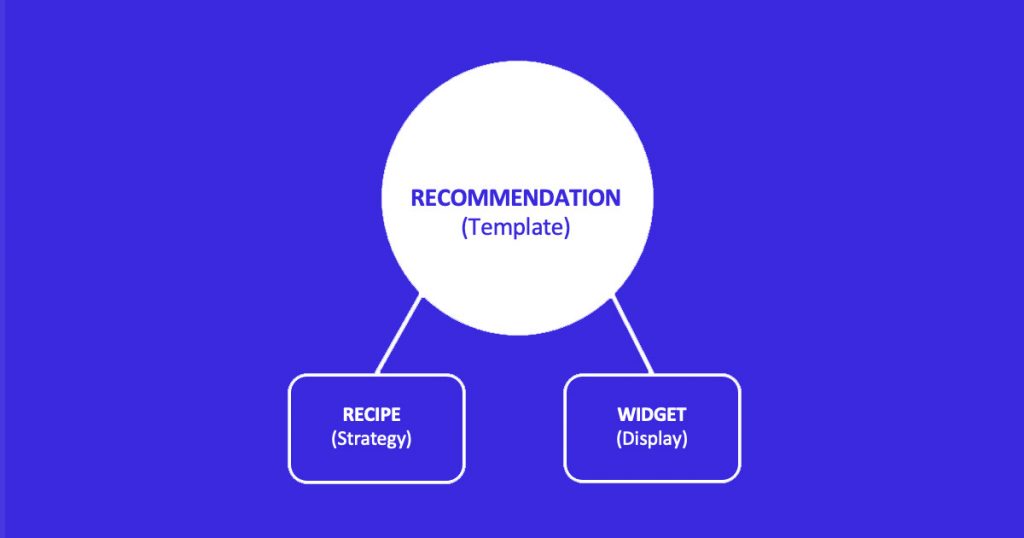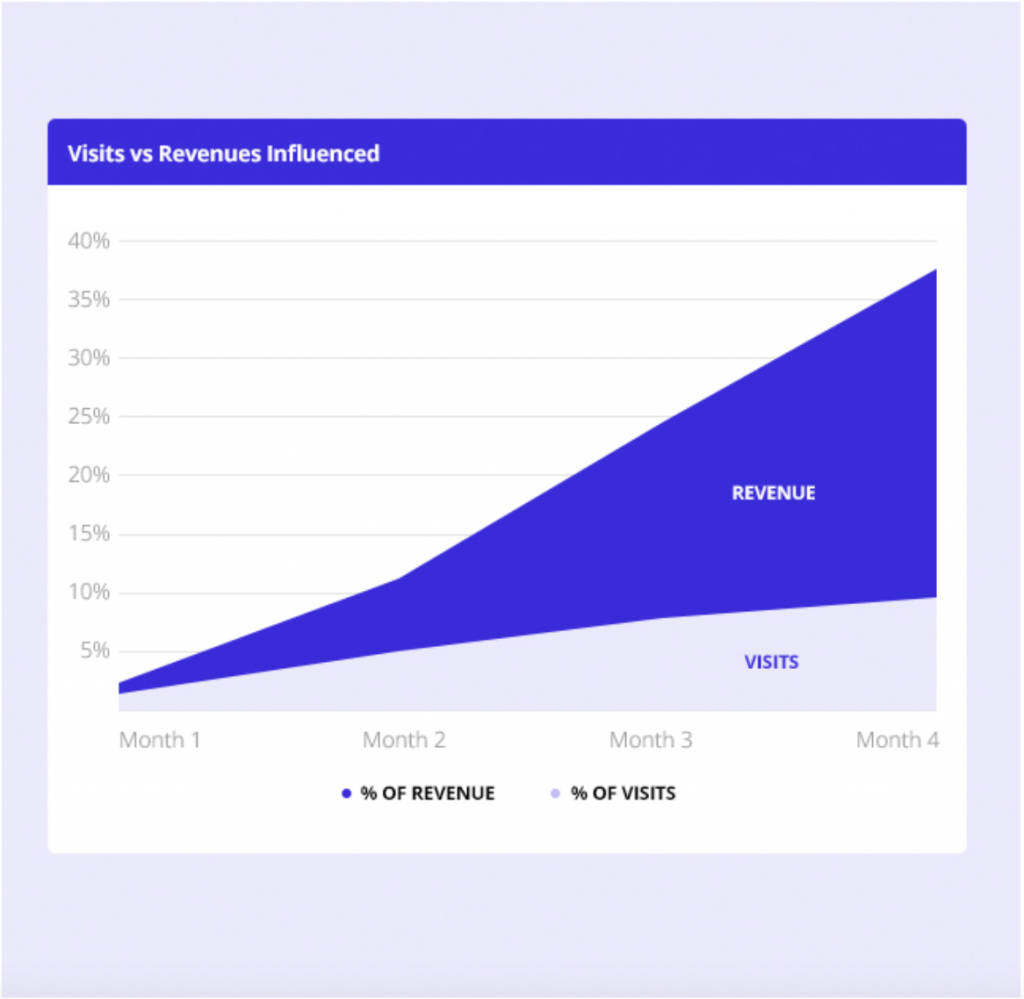How Shopify Stores Can Unlock New Sales from 90% of Unknown Visitors

There are many reasons to do product recommendations on your site – improving the overall shopping experience, connecting buyers with relevant products, or surfacing more ideas to browsers are a few examples. Compared to how eComm giants like Amazon do it (they influence 35% of all sales with their own product recommendation AI), most medium to large Shopify brands are way off the pace.
Your Shopify theme (and many other Shopify apps) likely use a basic algorithm that personalizes the shopping experience based on how your other existing customers’ behaved. But what if this isn’t the best approach to recommending the right products to potential customers? Also, what about first time, anonymous visitors?
This is where product discovery on your Shopify store fails:
- Your most relevant products are never seen (decreases engagement)
- Merchandising and product displays not adapting to visitors’ preferences (missed revenue opportunities)
- Personalization too simplistic (can’t keep up with myriad segments of shoppers)
Interestingly, this is also where Amazon leads – their algorithms learn from what customers are viewing and engaging with in real-time, instead of just showing more of what others bought in the past.
Our team built these algorithms into HiConversion Recommend – and to show just how well it works, we started a challenge to grow your visitor revenue in less than 7 days.
Done right, personalized product recommendations can dramatically improve RPV (Revenue Per Visitor) by helping your shoppers find more of what they like. Since machine-learning systems are doing much of the heavy lifting, you are encouraged to apply as many different strategies, segmentation practices, and product display experiences as you can.
And running a ‘portfolio’ of recommendations creates exponential results, without needing large increases in new traffic. We proved it here.
How to fix your Shopify product discovery and begin unlocking new revenue from your existing traffic:
- Use live visitor actions and context to drive recommendations (display most relevant items)
- Deeper personalization engine (create repeat buyers)
- Treat mobile and desktop experiences as unique shopping experiences (increase engagement)
In this article, I’ll share what exactly goes into creating an excellent product recommendation and why it’s so important to get the ingredients right.
What does product discovery mean for your Shopify store?
Essentially, product discovery is how easily visitors can find products of interest on your site. Sarah Hillel of Syte defines it:
“Product discovery is the way your customers find and explore your products. This can be done in a variety of ways, from text and visual search functionalities to personalized recommendation carousels to smart merchandising and even inspiration galleries. The goal is to surface relevant products for each customer at the right moment.”
Mass use of mobile devices and social media have dramatically reduced online shopper’s attention spans, while also creating highly inconsistent buying journeys. If your website visitors do not quickly discover a product of interest, they are gone – often for good.
This makes product discovery a high priority for Shopify brands, because if customers can quickly find what they are looking for, you have a significant advantage over competitors who don’t have the same capability. This is where product recommendations come in.
Why Shopify brands need better product recommendations 🤔
We can think of personalized product recommendations as a two-way street.
In one direction, it’s about helping visitors easily discover products of interest to increase engagement and drive new revenue. In the other, it’s about learning how visitors react to your product recommendations (and your overall brand experience).
By providing personalized product recommendations, Shopify brands can help visitors find relevant products based on their preferences – all with the goal of driving engagement, conversions, and higher Revenue Per Visitor (RPV).
Every small improvement in your Key Performance Indicators (KPIs) is an opportunity to compound growth.
More engagement, more time on site, and more conversions equals more new revenue.
That said, to be truly effective recommendations, they must blend the following concepts together.

What goes into a perfect personalized product recommendation?
Creating effective product recommendations is a science, and understandably, many eCommerce teams find it daunting. Realizing this, we boiled it down to the 5 most important elements every good product recommendation should recognize:
- Visitor Segmentation: Most of your visitors are new to your site with no purchase history (up to 90% in most cases). A much smaller percentage are returning visitors, who left traces of previous visits – mixed with an even smaller number of returning buyers.
- Buying Lifecycle: Some visitors are discovering your brand’s products for the first time, some are exploring which product to buy, and some are buying. On the other hand, some are returning for a follow up visit or even to make another purchase.
- Recommendation Strategies: Combinations of algorithms power the logic behind which products are selected and presented to a visitor. Choosing the proper recommendation strategies is therefore essential to success.
- Recommendation Locations: One of your goals should be to maximize the percentage of visitors who engage with personalized recommendations, since this translates into new revenue. So, the need for multiple recommendations – on each of your pages – is a must.
- Recommendation Designs: How products are presented matters.
Missing any of these could greatly affect the success of a product recommendation, which is why all the bases need to be covered before running them on your site.
Example: Your Shopify Store’s Product Collection Page vs. Amazon’s Product Collection Page
The product collection pages help visitors navigate your store more easily. They also guide visitors to go deeper into your site by clicking through to product detail pages.
You’re likely familiar with this type of online merchandising if you visit apparel or beauty brand sites, but it can be used for a wide range of brands.
When you analyze a typical Shopify site’s collection page, it is dominated by long list of products presented in a grid. Filtering options are presented as a side navigation menu, and sometimes a product recommendation element placed at the bottom of the page.
This means the average eCommerce team is missing an opportunity to achieve the true merchandising potential of collection pages.
A visit to an Amazon.com product collection page reveals a totally different story. They are fully-maximizing the use of product recommendations on their site.
A few or no recommendations. As seen on most Shopify collection pages:

Example of ‘portfolio of product recommendations’. As seen on Amazon collection pages:

And so it goes, from special deals to top rated products – variations of recommendations can be broad or specific – ultimately it is about engaging your visitors and motivating them to act.
Good product discovery is hard, our goal is to make it easy for Shopify brands ✅
Clearly, there’s a lot that goes into creating good product recommendations but there aren’t many brands out there with the kind of resources Amazon has to pour into them. We created Recommend to make the same technology more accessible to the rest of eCommerce – one of the ways we’re doing this is through recommendation templates.

Our recommendation templates make it simple to apply best practices on your site, so you don’t have to hire a team of data scientists and strategists to get the benefits of these algorithms.
Here are the 3 elements that make up a HiConversion Recommend template:
1) Strategy
Your game plan designed to maximize a specific business objective. For example, to show new visitors’ products that match interests of cohorts grouped by channels, devices, and time of the day – the app provides a long list of strategies – just choose an appropriate strategy based on your business objective.
2) Recipes
This is the part of the template that maps a specific recommendation strategy to a specific recipe (algorithm) to generate a list of products that match a strategic objective.
More advanced recipes provide additional configuration options, like manual overwrite, visitor targeting, or product filtering options.
Recipes combine different deep machine learning algorithms trained on your store and website session-based data – all fully automated. The recipe information is purely informational to help you better understand of how your goal is achieved.
3) Widgets
This is a module for displaying product content and associated messaging on the eCommerce site – widgets are highly customizable enabling you to control the placement, layout, number of products listed, or style properties.
Widget customization is the most critical practical step in deployment of the recommendation.
The visual output of the strategy with all details of placement, content elements, and styling for listing recommended products – here you can use the visual editor to customize the details, so your recommendations seamlessly blend into your site theme.
Start using Amazon’s personalization algorithms on your Shopify store
Amazon.com pioneered personalization starting in 1998 when the store introduced an array of features to better serve book buyers, including instant recommendations from its large catalog.
Since then, Amazon has leveraged decades of research in personalization to enhance the customer experience across Amazon.com, Prime Video, Amazon Music, Kindle, and Alexa through recommended item and content widgets.
Here are 5 ways HiConversion Recommend can help your brand easily deploy great product recommendations to your customers, just like Amazon:
- Designed to automatically adapt in real time to different kinds of visitors. Also have the added benefit to further segment inclusion in your recommendation experiences.
- Enables lifecycle orchestration of the product recommendations most relevant to the stages of your visitors’ purchase journey.
- Gives you dozens of templates – connecting the right strategy to the right experience.
- Automatically finds on-page locations, enabling ‘one-click’ deployment.
- Gives you a powerful visual editor so you can modify how visitors see product recommendations.
HiConversion Recommend powered by Amazon Personalize is the Shopify app developed by HiConversion – making it possible for medium to large retail brands to benefit from the same product recommendation capabilities used on Amazon.com.




